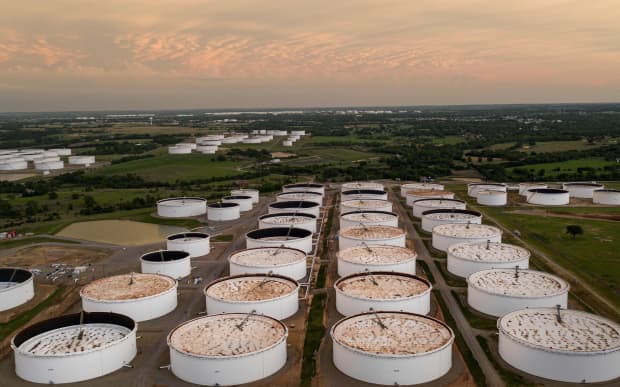This post was originally published on this site

Storage will also be in focus.
Johannes Eisele/Agence France-Presse/Getty Images
Oil futures continued to steam higher Wednesday, closing at a more-than-eight-month high on continued optimism over progress toward COVID-19 vaccines and a drop in U.S. crude inventories.
West Texas Intermediate crude for January delivery CL.1, +1.87% rose 80 cents, or 1.8%, to end at $45.71 a barrel on the New York Mercantile Exchange. January Brent crude BRN00, +0.22%, the global benchmark, advanced 75 cents, or 1.6%, to settle at $48.61 a barrel on ICE Futures Europe. For the second straight session, both benchmarks closed at their highest since March 5.
Oil has rallied in November, finding support as drugmakers reported strong showings by vaccine candidates in late-stage trials, overshadowing worries about a continued surge in COVID-19 cases in Europe and the U.S.
Crude was also boosted Tuesday after the Trump administration removed a roadblock to a transition to a Biden administration.
Still “it is hard not to get concerned about how quickly oil has priced in the recent good news, and hedge funds have flipped bear to bull on the move from sub-Brent $45 to plus-$48, including expectations that OPEC will extend current production cuts by 3-6 months,” said Stephen Innes, chief global markets strategist at Axi, in a note.
“It remains the market’s base case that an extension will be announced. Still, the oil will be susceptible in the near-term to any outcome seen as indicating that the OPEC tensions mentioned in recent press reports are real and may threaten the implementation of cuts during what remains an uncertain period for oil,” he said.
News reports earlier this month said tensions were rising within the alliance between the Organization of the Petroleum Exporting Countries and its allies, a group known as OPEC+.
The alliance is scheduled to ease existing curbs in January, but is expected to decide at a Nov. 30-Dec. 1 meeting to delay that move.
Oil extended gains after the Energy Information Administration said U.S. crude inventories fell by around 800,000 barrels last week. Analysts surveyed by S&P Global Platts had looked for a fall of 1.3 million barrels, but the EIA data came as a relief after the American Petroleum Institute, an industry trade group, late Tuesday reported that inventories rose by 3.8 million barrels.
The EIA, however, reported a larger-than-expected 2.2 million barrel rise in gasoline inventories, versus expectations for an increase of 800,000 barrels. Distillate stocks fell 1.4 million barrels last week, according to the EIA, compared with expectations for a fall of 2.1 million barrels.
The EIA also reported that natural gas in storage fell by 18 billion cubic feet last week. The EIA data was released a day early due to the Thanksgiving Day holiday on Thursday.
The holiday also saw the release of weekly rig-count data from Baker Hughes brought forward from Friday. The oil-field services firm said the number of U.S. oil rigs rose by 10 this week to 241.
December gasoline RBZ20, +2.42% rose 2.3% to $1.2875 a gallon, while December heating oil HOZ20, +2.17% gained 2% to $1.3866 a gallon.
December natural gas NGZ20, +3.60% gained 4.4% to finish at $2.896 per million British thermal units.

